Ashtamangala: the Meaning of the 8 auspicious symbols Of Buddhism
The Ashtamangala are a sacred set of eight auspicious signs or symbols. They are considered a teaching tool, which point to the qualities of enlightenment. Within Buddhism, the Ashtamangala, are symbols of good fortune and represent the offerings made to Buddha by the gods upon gaining enlightenment. Here are the most common interpretations and meaning of each symbol.
By Beatrix Potter
(Bio below.)
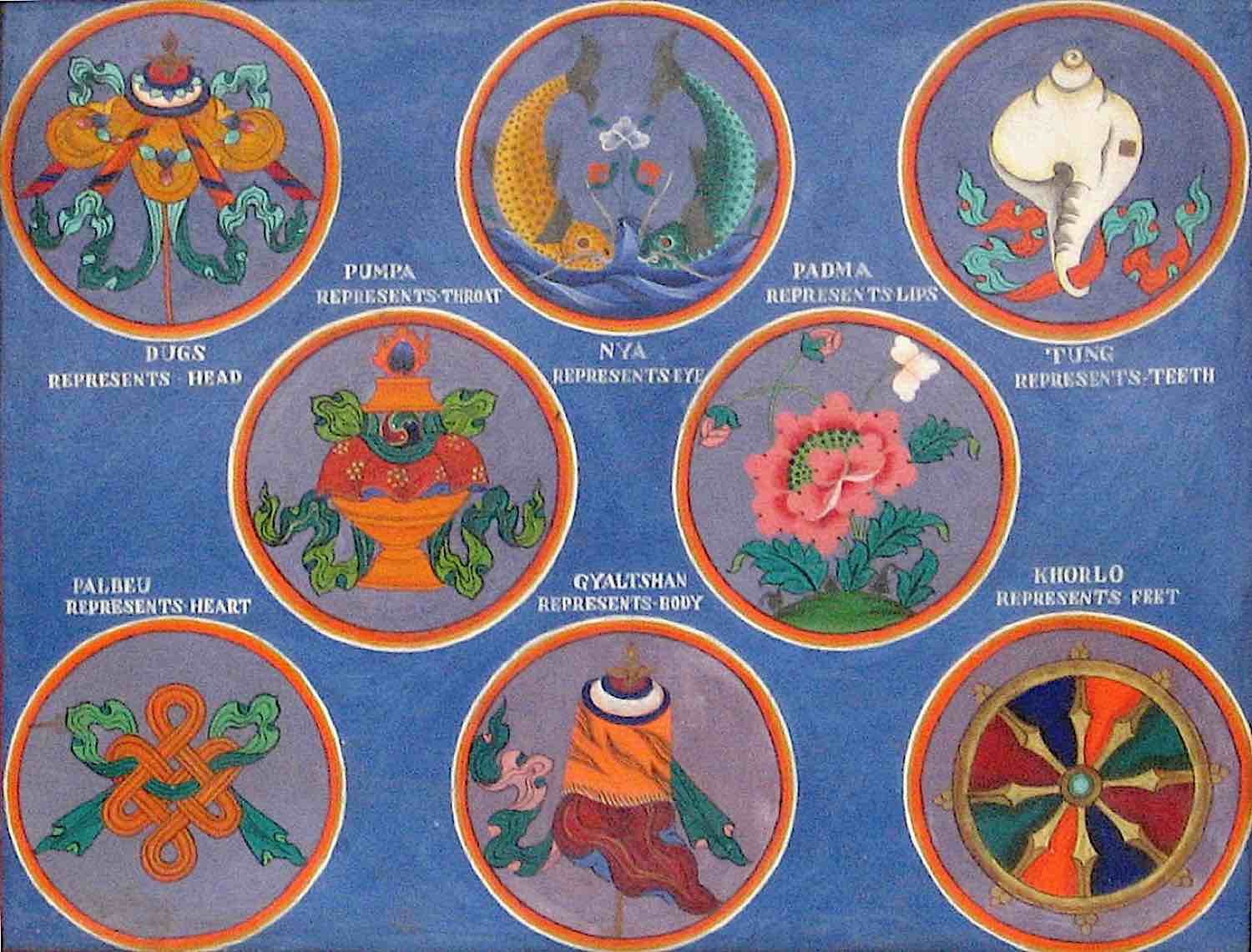
The Conch
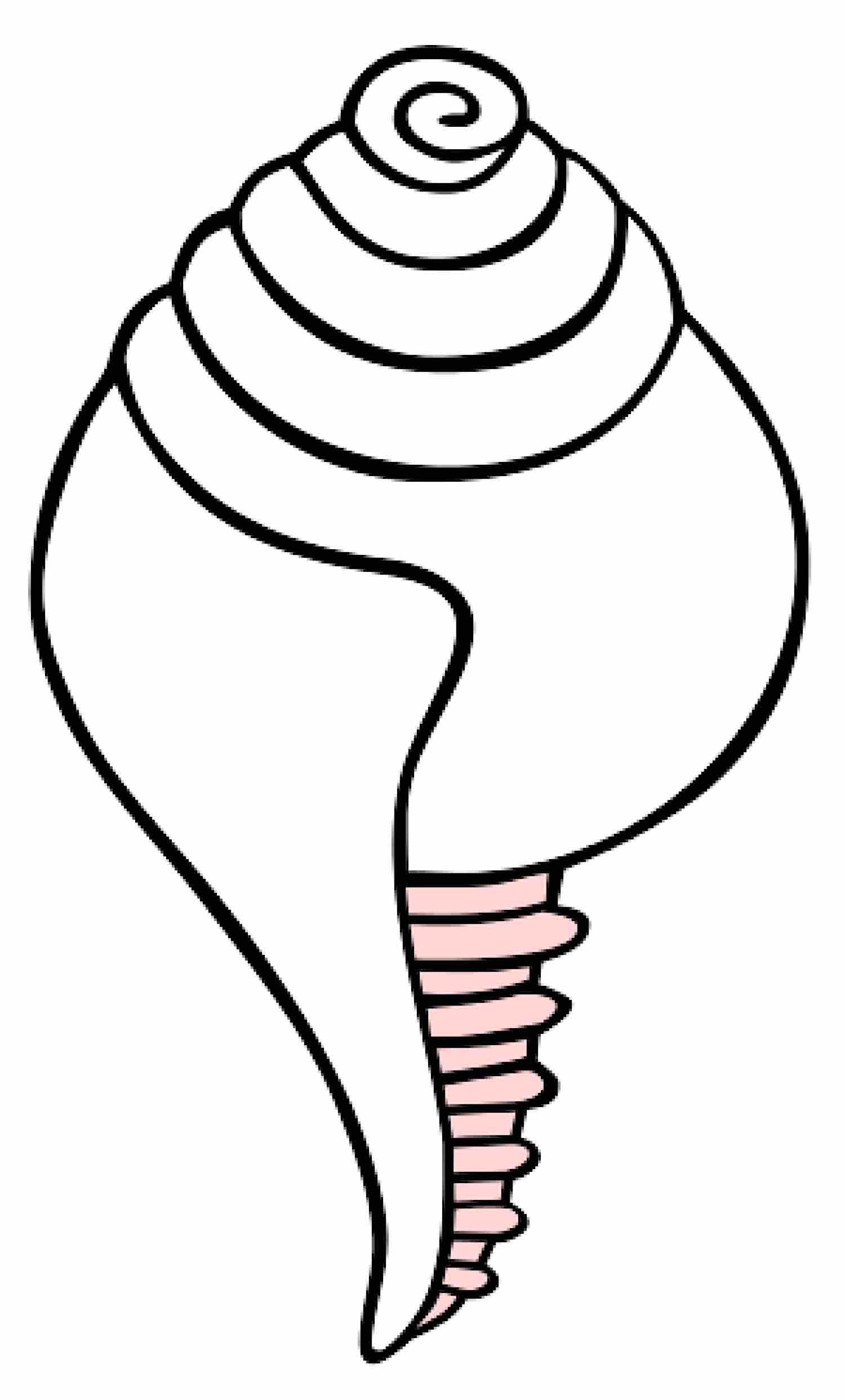
This symbol, of a white, right-turning conch shell, is representative of the deep, melodious and interpenetrating sound of the dharma. It awakens disciples from their own deep slumber of ignorance and instead, encourages them to not only seek to accomplish their own welfare, but also to strive to realize the welfare of others.
The Pair Of Golden Fish

The symbol of the pair of golden fish is used to symbolize the auspiciousness of all conscious beings in a state of complete fearlessness. In the same manner in which fish swim freely through the ocean, so too should all living beings live spontaneously and freely as they migrate from one place to another, without fear of drowning in samsara – the perpetual cycle of rebirth, existence and death. The two fish also symbolize happiness, through their complete and utter freedom of movement through the seas, as well as representing fertility and abundance.
The Endless Knot
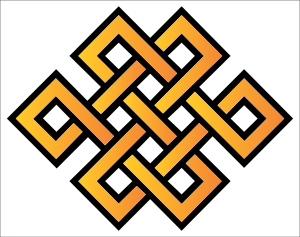
The endless knot has a multiplicity of meanings. Ultimately, however, it is a symbol of the unity of everything and the way in which all things are intertwined and linked. The endless knot represents the mutual dependence of secular affairs and religious doctrine. It is also representative of the interdependence of wisdom and compassion in enlightenment, as well as the union of wisdom and method.
The Lotus
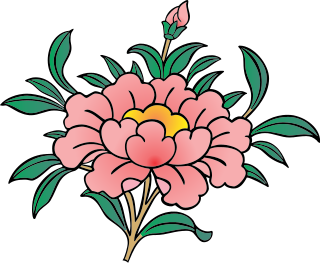
The lotus flower is a symbol of complete purity and rejection of all desecrations of the body, mind and speech. The lotus flower, which has its roots in the mud, deep at the bottom of the pond, nonetheless grows and is able to float immaculately and in sheer purity above the muddy waters. So too, can one’s body, speech and mind learn to be free of desire and attachments. The bloom of a Buddhist lotus has 4, 8, 16, 24, 32, 61, 100 or 1,000 petals and these same numbers can correspond to the body’s chakras. or energy centers.
The Parasol

The symbol of the jeweled or precious parasol represents the protection of all beings from harmful forces, illnesses, disease and the obstacles confronted during this life. The parasol further symbolizes the protective quality of the seventh primary chakra, the Sahasrara. As such, all may seek refuge beneath the auspiciousness of the parasol.
The Dharmachakra

Sometimes referred to as ‘Wheel of the Law’ or Dharma Wheel, the Dharmachakra is a golden wheel, representative of the Dharma teachings and Gautama Buddha. It represents the auspiciousness of the precious teaching and realization of Buddha’s doctrine. It is symbolic of the continuation or turning of the wheel, of the Dharma teachings, across all realms and time. As such, all beings are able to continue to experience the liberation it offers.
The Treasure Vase
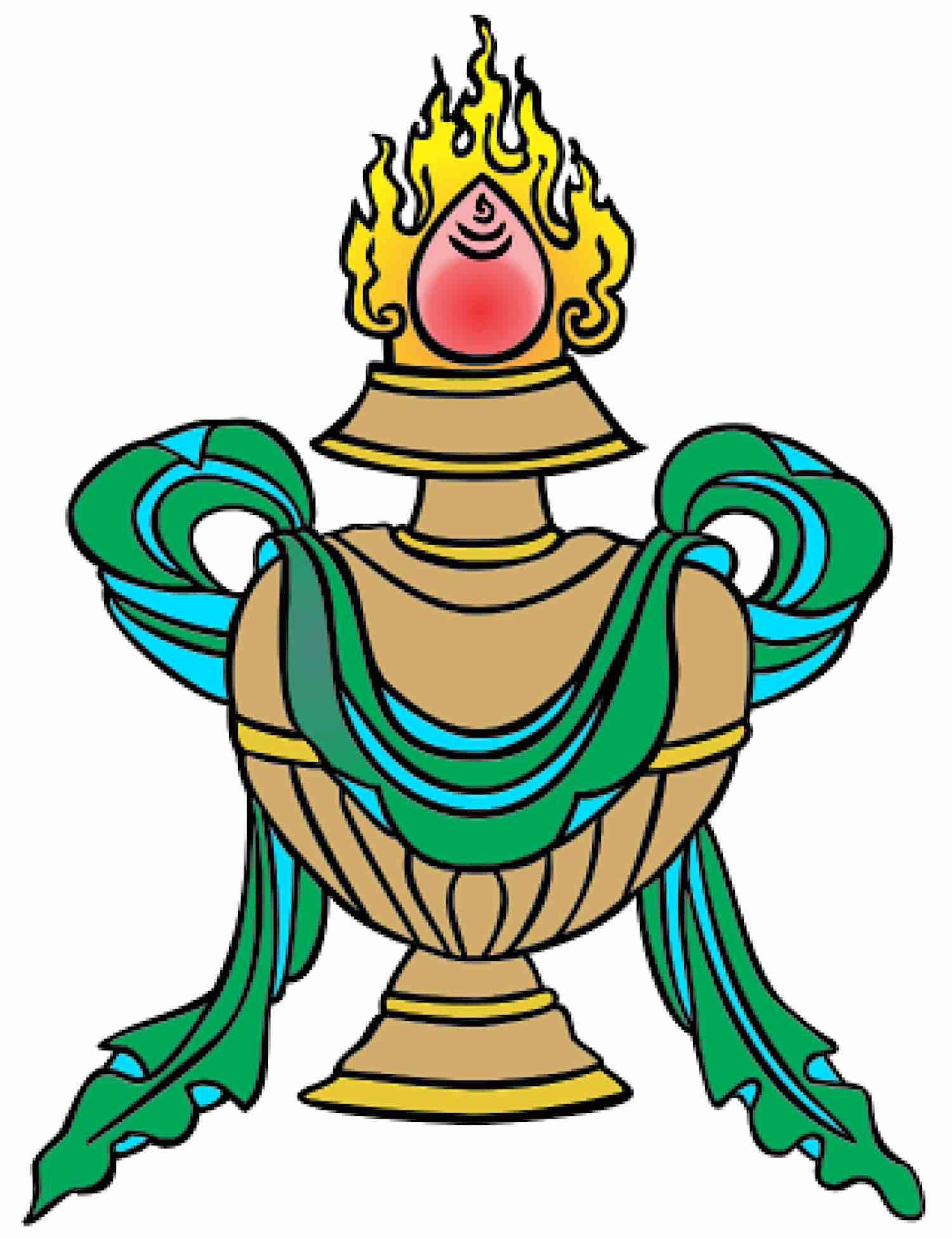
The treasure vase is symbolic of the unlimited quality of the dharma teachings. Regardless of how many teachings Buddha may have shared, the quality and the treasure contained within them was never lessened or weakened. As such, the treasure vase is also symbolic of longevity, wisdom and all the benefits offered in this world, as well as liberation. It further symbolizes wealth, prosperity, long life and health. Due to its representation, the vase or wisdom urn is also often used in many initiations and empowerments.
The Victory Banner

The dhvaja, or banner, was a standard feature of ancient Indian military warfare. The victory banner is the symbol used to represent the victory of Buddha over the four obstacles which stood in the path of enlightenments – desire, pride, disturbing emotions and ultimately, the fear of death. It is further used to represent the total victory of the Buddhist doctrine over destructive and malevolent forces. The victory banner is also used to symbolize the victory over negativity, challenges and hurdles confronted by each individual and the activities of one’s own mind, body and speech in overcoming these.
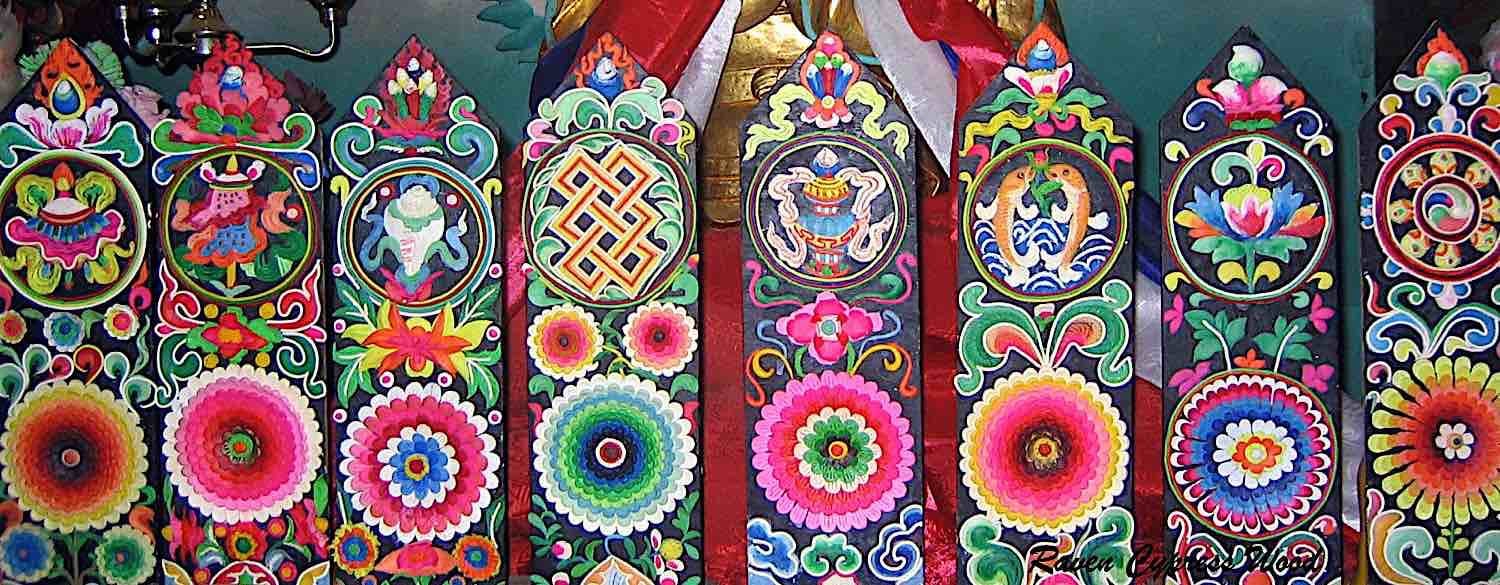
More articles by this author
Search
Latest Features
Please support the "Spread the Dharma" mission as one of our heroic Dharma Supporting Members, or with a one-time donation.
Please Help Support the “Spread the Dharma” Mission!

Be a part of the noble mission as a supporting member or a patron, or a volunteer contributor of content.
The power of Dharma to help sentient beings, in part, lies in ensuring access to Buddha’s precious Dharma — the mission of Buddha Weekly. We can’t do it without you!
A non-profit association since 2007, Buddha Weekly published many feature articles, videos, and, podcasts. Please consider supporting the mission to preserve and “Spread the Dharma." Your support as either a patron or a supporting member helps defray the high costs of producing quality Dharma content. Thank you! Learn more here, or become one of our super karma heroes on Patreon.
Beatrix Potter
Author | Buddha Weekly
Beatrix Potter is a dedicated spiritual writer at Essay Services and UKWritings Review writing blogs, who writes extensively about ways to manage and reduce stress and anxiety. Beatrix has devoted herself to inspiring others, by helping them to find wholeness and cultivate ways to fully integrate their body, mind and spirit. She aims to foster wellbeing for all and as such, works closely advising companies, giving lectures and workshops, and through delivering personalized courses. Beatrix also tutors students at all stages of their learning journey at Top assignment writers Australia.













